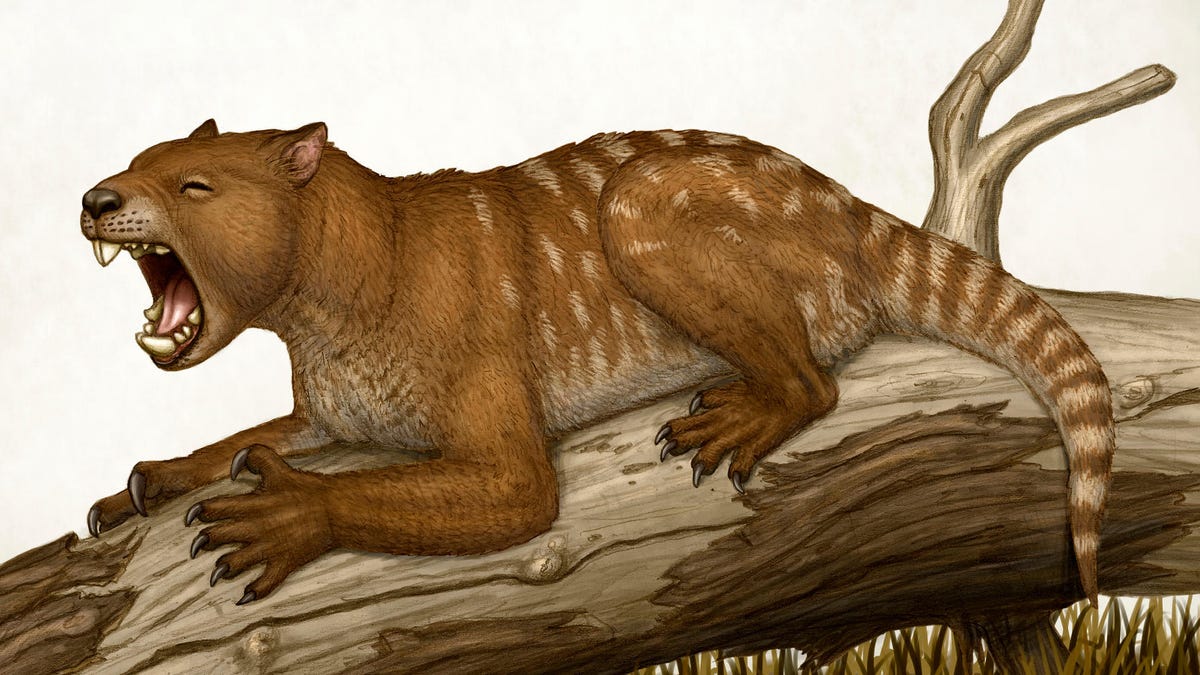Scientists reconstruct skeleton of terrifying prehistoric 'marsupial lion'
New fossil evidence paints a picture of an apex predator, as big as a lion, that terrorized ancient Australian forests.

Australia is well-regarded as a place full of fauna that can kill you. Spiders, snakes, sharks, toads. But those modern-day nightmares pale in comparison to the terrifying "marsupial lion" that once stalked ancient Australia.
Thylacoleo carnifex.
The largest Australian marsupial carnivore ever existed some 45,000 years ago, weighed as much as a small lion and had a thumb-like digit it used to slash its prey.
For the first time, paleontologists have been able to reconstruct the full skeleton of T. carnifex providing new evidence on how the creature moved, better understanding its feeding and hunting habits.
The research, conducted by researchers at Flinders University in Australia and published in the journal PLOS One on Dec. 12, built on the discovery of fossilized remains found in South Australia in 2007 -- and for the first time enabled analysis of a complete tail- and collarbones. By combining the recent discoveries with older remains, the research team could compare the skeleton to present-day marsupials, painting a picture about its true nature.
Studying the full skeleton revealed that T. carnifex may have moved and hunted like a present-day scavenger: the Tasmanian Devil.
"It is the rather robust, stiff and inflexible lower back and base of the tail that resembles the backbone of the Tasmanian Devil, to which it is not remotely related, yet this structure would undoubtedly produce that rather ungainly half-bounding gait of devils (a case of convergence not ancestry)" said lead researcher Professor Rod Wells.
However, it tailbone characteristics were also somewhat similar to the extinct thylacine and the red kangaroo. The chevron bones, V-shaped bones in the tail, suggest that T. carnifex may have been able to utilize its tail as support, standing on its hind legs like my nightmares predicted.
Previous research suggested that the creature's limbs were similar to that of the African lion and perhaps not a tree-climber, nor an agile runner. The structure of the animal's backbone points against it being an active hunter and perhaps instead an ambush predator. In contrast to the previous research, the Flinders team suggest that the collarbones predict the creature's arms were not used to just get around and climbing may have been possible.
"I'm a little reticent to use the words 'drop bear', but I think it's very much a stealth predator," Wells told the ABC. The "drop bear" is an Australian myth about deadly koalas that silently drop out of trees onto their prey. Fortunately, T. carnifex might have just dragged its prey up a tree to devour it, rather than rain terror from the treetops.
Perfect.
So the next time you think about all the things in Australia that want to kill you, maybe you'll think about how lucky Australians really are.
CNET's Holiday Gift Guide: The place to find the best tech gifts for 2018.
Taking It to Extremes: Mix insane situations -- erupting volcanoes, nuclear meltdowns, 30-foot waves -- with everyday tech. Here's what happens.

